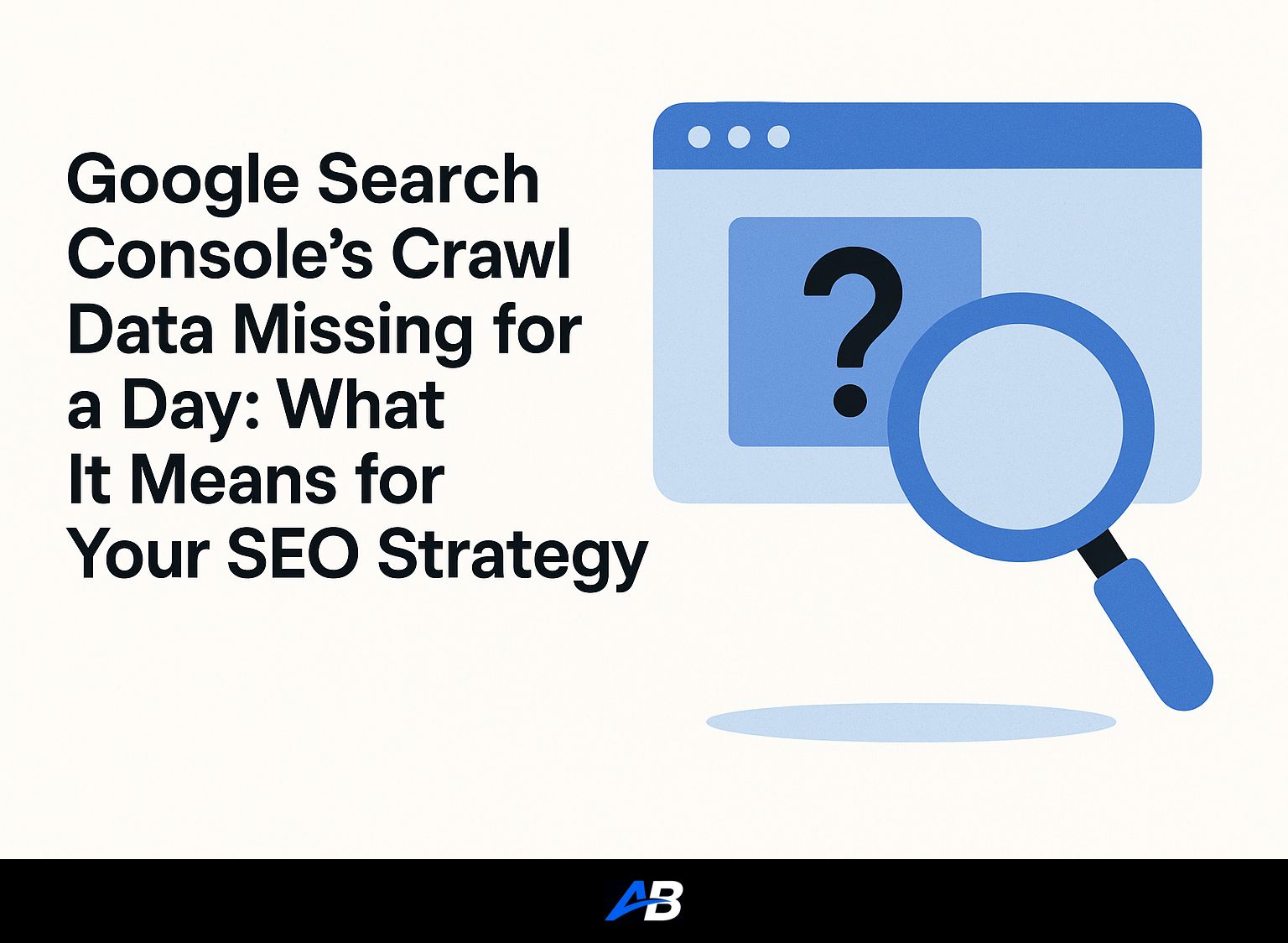
This week, numerous users of Google Search Console were left pondering over a curious incident: a full day’s worth of crawl data, specifically for October 14, 2025, mysteriously vanished from reports, leading to widespread discussion and concern across the SEO community.
Contents
Short Summary:
- October 14, 2025, crawl data went missing in Google Search Console.
- This is not an isolated event; similar gaps have been reported in the past.
- Industry experts suggest this is a reporting glitch, not an indication of crawling issues.
The recent disappearance of crawl data from Google Search Console for a full day has left many digital marketers and business owners on edge. The affected date, October 14, 2025, shows a significant gap in the data charts, which has sparked conversations across various SEO forums and social media platforms.
The Crawl Stats report is pivotal for website owners, serving as a barometer of how effectively Google is crawling their sites. It details metrics such as the number of requests made by Google’s crawling bots, response times from servers, and any availability issues that may arise during the crawling process. This data is particularly critical for companies that depend heavily on organic search traffic, proving crucial to understanding how Google’s indexing influences their overall visibility and search rankings.
A Recurring Glitch in the System
Interestingly, this phenomenon is not unprecedented. Reports by SERoundtable indicate that crawl stats report anomalies have occurred several times in the past few years. For instance, similar issues were noted in February 2022 and November 2021. Most of these incidents resolved themselves without any direct intervention, often returning to normal after a couple of days.
In an analysis published by Search Engine Land, industry experts have been quick to emphasize that the missing crawl data is not likely to indicate actual changes in Google’s crawling activity. “This has happened a few times before, and it is now happening again,” the publication pointed out, advising users to interpret this issue as a Google-related problem rather than cause for alarm over potential penalties or algorithmic changes.
“One clear missing data point on the 10/15 chart for Crawl Requests has been popping up across various webmasters…” – Lisane Andrade, shared insights on LinkedIn.
Users across communities are seeking reassurances regarding their websites’ statuses, and many are engaging in discussions to determine if others are experiencing the same data gaps.
Understanding the Impact on SEO Strategies
The implications of this missing data extend beyond mere numbers on a report. For SEO professionals, particularly those managing large-scale websites or dynamic platforms, the absence of accurate data can complicate ongoing monitoring endeavors. Crawl stats are instrumental in optimizing for Google’s crawl budget — the finite amount of resources assigned to indexing a site’s pages. This concern amplifies for larger e-commerce platforms or content-rich news sites, with potential repercussions on their SEO strategies.
Without reliable crawl data, site owners might make misinformed assumptions regarding their crawl rates. This may lead to delays in addressing actual underlying issues such as duplicate content or server errors that could significantly hinder their site’s performance in search results. Historical context may provide some comfort, as outlined in a past instance where a two-day data gap in November 2021 was confirmed by Google, yet it didn’t negatively impact search performance.
“Give it a few days and check back later, but I doubt this has impacted your crawling, indexing, or ranking in Google Search.” – Industry experts suggest to stay patient during these anomalies.
As webmasters navigate this hiccup, leveraging other tools within Google Search Console can offer some insights into site health. By utilizing the URL Inspection tool or performance reports, site owners can gather additional data points to assess the condition of their websites effectively. Google’s support documentation has underscored that while the crawl stats report plays a critical role in deciphering trends in crawling behavior, it is not infallible and can experience occasional blemishes due to data processing delays.
Looking to the future, instances like these underline the importance of developing more resilient monitoring methodologies beyond Google’s suite of tools. Although the crawl stats interface has undergone notable updates since its revamp in 2020, experts advocate for adopting third-party crawlers and analytics platforms for enhanced redundancy. Maintaining patience is crucial; historical context reveals that most issues often resolve without extensive intervention.
The Fragility Behind the Algorithms
In a field characterized by data-driven decision-making, such glitches serve not merely as annoyances but as reminders of the inherent fragility within the systems guiding SEO efforts. Seasoned SEO professionals recognize the importance of focusing on long-term website optimization rather than getting caught up in the transient errors that may occur due to reporting issues.
As Google continues enhancing its tools, patterns like these may become increasingly rare, but in the meantime, a vigilant and diversified approach to tracking digital presence is essential. The SEO community can mitigate potential disruptions by consistently utilizing tools that facilitate ongoing monitoring and performance evaluation, effectively adapting to any lingering uncertainties that may arise.
Conclusion
The missing crawl data in Google Search Console for October 14, 2025, remains an unexplained yet common occurrence that affects many users simultaneously. While worrisome for some, industry experts assure that this does not correlate with actual crawling issues nor penalize webmasters’ search performance. As we await Google’s resolution of the reporting error, practitioners should lean on established best practices and diversified tracking strategies to keep their SEO tactics robust. Stay curious, stay informed, and leverage tools like Autoblogging.ai, an AI Article Writer that not only aids in generating SEO-optimized content but also helps streamline the content creation process, allowing marketers to navigate through uncertainty with greater confidence.
Do you need SEO Optimized AI Articles?
Autoblogging.ai is built by SEOs, for SEOs!
Get 30 article credits!
